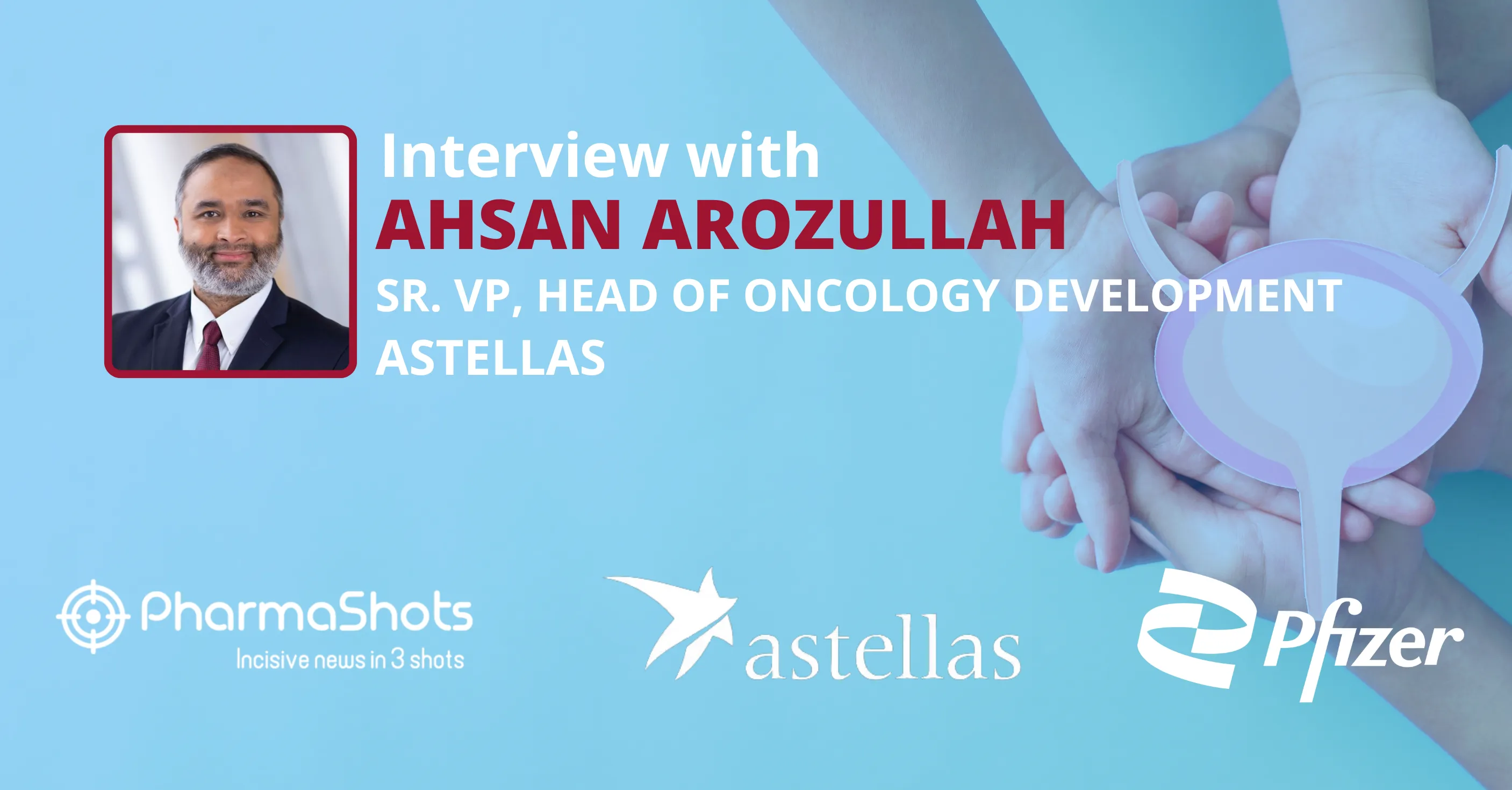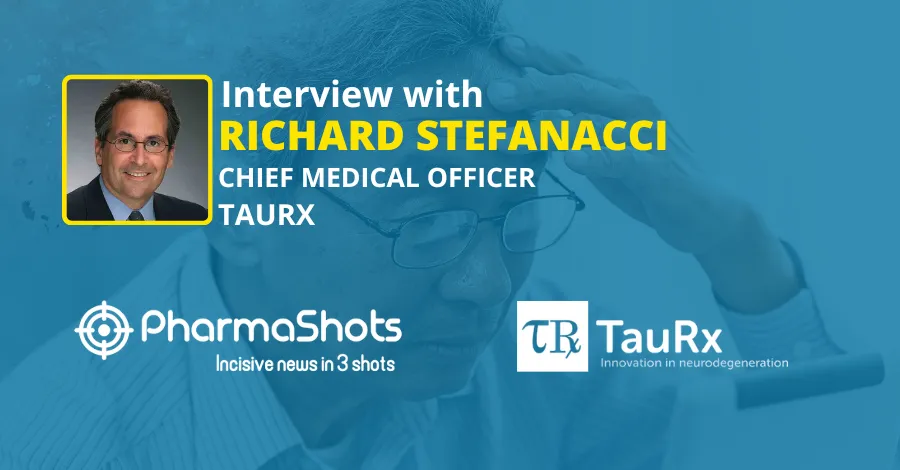
PharmaShots Interview: Astellas’ John C. Hairston & Gabriel P. Haas Share Insights on Xtandi (enzalutamide) for the Treatment of Prostate Cancer
In an interview with PharmaShots, John C. Hairston, Sr. Medical Director, Oncology US Medical Affairs & Gabriel P. Haas, Senior Medical Director, Oncology Development Medical Sciences at Astellas share their views on the data of Xtandi (enzalutamide) over Active Surveillance for Localized Prostate Cancer
Shots:
- The P-II (ENACT) study evaluates enzalutamide as monothx. vs active surveillance in men with low- or intermediate-risk localized prostate cancer. The study showed a 46% reduction in risk of prostate cancer progression, AEs (92.0% vs 54.9%) @1yr.
- The P-III (ARCHES) study evaluates enzalutamide (160mg, qd) + ADT vs PBO + ADT in 1150 patients with mHSPC at sites in the US, Canada, EU, South America & Asia-Pacific region. Patients continued on a LHRH agonist or antagonist or had a history of bilateral orchiectomy
- The study met its 1EPs i.e., 61% reduction in risk of radiographic progression or death. In OS results, 34% reduction in the risk of death over ADT alone, m-OS was not reached. The safety profile was consistent with results from the primary analysis
Tuba: Can you provide an overview of enzalutamide and its current uses in advanced prostate cancer?
John Hairston: XTANDI (enzalutamide) is an androgen receptor inhibitor that acts on multiple steps of the androgen receptor-signaling pathway within the tumor cell.[i] Based on clinical research, it inhibits androgen binding to the androgen receptor, androgen receptors from entering the nucleus, and androgen receptor binding to DNA.1
Widely available since its approval in 2012, XTANDI has been prescribed to more than 678,000 patients worldwide and to more than 209,000 patients in the United States.[ii] It is the first and only novel hormone therapy (NHT) approved by the U.S. Food and Drug Administration (FDA) in three distinct types of advanced prostate cancer: non-metastatic castration-resistant prostate cancer (nmCRPC), metastatic castration-resistant prostate cancer (mCRPC) and metastatic castration-sensitive prostate cancer (mCSPC; also known as metastatic hormone-sensitive prostate cancer).
Tuba: Can you briefly discuss the study design for the Phase 2 ENACT study? What were the key highlights from this study?
John Hairston: The Phase 2 ENACT study was an open-label, exploratory study, which evaluated enzalutamide monotherapy compared to active surveillance in men with low- or intermediate-risk localized prostate cancer. The study showed that treatment with enzalutamide significantly reduced the risk of prostate cancer progression by 46% (n= 227; hazard ratio [HR]=0.54; [95% confidence interval [CI]: 0.33-0.89]; p=0.02).[iii]
Adverse events (AEs) were reported by 92.0% of the patients treated with enzalutamide and 54.9% of patients in active surveillance during the first year. The most commonly reported AEs in the enzalutamide treatment arm (≥10% of subjects) during the first year were fatigue, gynecomastia, nipple pain and breast tenderness. The majority of these AEs were Grade 3 or lower.4
Of note, enzalutamide is not approved for use in men with low- or intermediate-risk localized prostate cancer, and this data is not included in the XTANDI U.S. Full Prescribing Information.
Tuba: Can we talk about the rationale behind placing active surveillance as active comparator in the ENACT study?
John Hairston: According to The National Comprehensive Cancer Network (NCCN), active surveillance involves actively monitoring the course of prostate cancer disease with the expectation to intervene with curative intent if the cancer progresses. While Astellas and Pfizer currently have no plans for additional research in men with low- or intermediate-risk localized prostate cancer, the Phase 2 ENACT study provides information about this early stage of the disease.
Tuba: What plans do Astellas and Pfizer have to continue to advance research for XTANDI? Please provide us with some details.
John Hairston: Astellas and Pfizer are committed to the continued evaluation of XTANDI’s potential benefits. The Phase 3 EMBARK study, evaluating enzalutamide plus leuprolide, enzalutamide monotherapy and leuprolide alone in men with high-risk non-metastatic prostate cancer progressing after definitive therapy, is currently ongoing.
Tuba: Can you briefly discuss the study design for the Phase 3 ARCHES study?
Gabriel Haas: The Phase 3 ARCHES study was a randomized, double-blind, placebo-controlled trial (NCT02677896), which enrolled 1,150 patients with metastatic hormone-sensitive prostate cancer (mHSPC) at sites in the U.S., Canada, Europe, South America, and the Asia-Pacific region. Patients in the trial were randomized to receive enzalutamide (160 mg daily) plus androgen deprivation therapy (ADT) or placebo plus ADT and continued on a luteinizing hormone-releasing hormone (LHRH) agonist or antagonist or had a history of bilateral orchiectomy.
The primary endpoint of the trial was radiographic progression-free survival (rPFS) assessed by blinded independent central review. rPFS was defined as the time from randomization to radiographic disease progression at any time or death within 24 weeks after study drug discontinuation. Radiographic disease progression was defined by identification of two or more new bone lesions on a bone scan with confirmation (Prostate Cancer Working Group 2 criteria) and/or progression in soft tissue disease. Patients were stratified by volume of disease (low vs. high) and prior docetaxel therapy for prostate cancer (no prior docetaxel, 1-5 cycles, or 6 prior cycles).
Tuba: What were the primary results from the Phase 3 ARCHES trial?
Gabriel Haas: The ARCHES study met its primary endpoint and found that XTANDI plus ADT significantly reduced the risk of radiographic progression or death by 61 percent (n=1,150; HR=0.39 [95% CI: 0.30-0.50]; p<0.001), in men with mHSPC. The data were published in The Journal of Clinical Oncology in July 2019.[iv]
Tuba: Can you discuss the overall survival (OS) data from the ARCHES trial that were presented at ESMO 2021?
Gabriel Haas: At the ESMO Congress 2021, XTANDI plus ADT significantly reduced the risk of death by 34% (n= 1,150; HR=0.66; [95% CI: 0.53-0.81]; p<0.0001) compared to ADT alone in men with mHSPC. Median OS, which represents the time from randomization to death due to any cause, was not reached in either treatment group.[v]
Tuba: Were there any new AEs/ SAEs as a result of this analysis?
Gabriel Haas: The safety profile in both study arms was consistent with findings from the primary analysis. In the ARCHES primary analysis, Grade 3 or greater adverse events (AEs; defined as severe/disabling or life-threatening) were similar for patients receiving both XTANDI plus ADT and those who received placebo plus ADT (24.3% vs. 25.6%). Common AEs (occurring in at least 5% of patients) that were reported more often in patients treated with XTANDI plus ADT versus those treated with ADT alone included hot flush, fatigue, arthralgia, hypertension, nausea, musculoskeletal pain, diarrhea, asthenia and dizziness.2
Tuba: What insights and information were gathered from this study and how it is going to be helpful for patients and HCPs?
Gabriel Haas: OS is a critical endpoint used to evaluate a cancer medicine and was a key secondary endpoint in the ARCHES trial. With this analysis, OS benefit has been observed in patients treated with XTANDI in pivotal trials in three stages of advanced prostate cancer – metastatic castration-resistant prostate cancer (mCRPC), non-metastatic castration-resistant prostate cancer (nmCRPC), and in mCSPC.
In CRPC, the pivotal PREVAIL trial, the Phase 3 AFFIRM, and the Phase 3 PROSPER trial showed a statistically significant advantage in OS for XTANDI plus ADT versus placebo.1
· In the AFFIRM trial, treatment with XTANDI plus luteinizing hormone-releasing hormone (LHRH) therapy resulted in a 37 percent reduction in the risk of death, as compared with placebo plus LHRH therapy (n= 1,199; hazard ratio [HR]=0.63; [95% confidence interval [CI]: 0.53 to 0.75]; p<0.0001) in men with mCRPC who have been previously treated with docetaxel-based chemotherapy.
· In the PREVAIL trial, treatment with XTANDI plus LHRH therapy resulted in a 29 percent reduction in the risk of death compared with placebo plus LHRH therapy (n=1,717; hazard ratio [HR]=0.77; [95% confidence interval [CI]: 0.67 to 0.88]; p<0.0001) and an 83% reduction in risk of radiographic progression or death compared with placebo plus LHRH therapy (HR=0.17; [95% confidence interval [CI]: 0.14 to 0.21; p<0.0001).
· In the PROSPER trial, XTANDI plus ADT reduced the risk of death by 27% (n=1,401; HR=0.73; [95% CI: 0.61-0.89]; p=0.001) versus placebo plus ADT in men with nmCRPC.
Source: Freepik
About Authors:
John C. Hairston

John C. Hairston is the Sr. Medical Director and US medical affairs lead for Enzalutamide at Astellas. He received his medical degree from UT-Houston Medical School in 1995, he completed urology and general surgery training at Northwestern University McGaw Medical Center Hospitals in Chicago. He completed a clinical fellowship in female urology, voiding dysfunction and pelvic reconstruction at The Cleveland Clinic Florida
Gabriel P. Haas

Gabriel P. Haas is the Senior Medical Director, Oncology Development Medical Sciences at Astellas. He has in-depth knowledge and more than 30 years of experience with Urological Diseases and Uro-oncology. Dr. Haas graduated from the University of Michigan (Bachelor of Science with Honors), and received his doctorate from Wayne State University School of Medicine. After completing his urology residency at Henry Ford Hospital, in Detroit Michigan, he completed a fellowship in urological oncology at the Surgery Branch of the National Cancer Institute of the NIH













